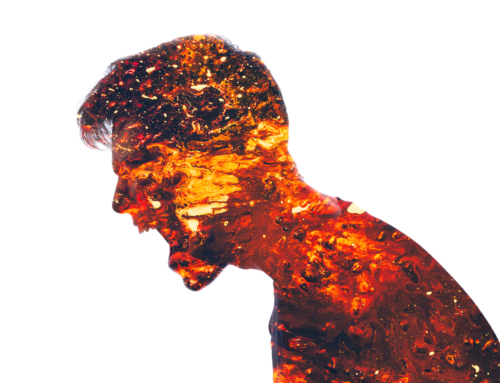Part IV
I’d like to tell you a story…
I called my daughter and said, “Your son is home from the ER now, and he is going to be OK.”
Imagine that you are driving in Atlanta rush hour traffic. In the middle lane. Your eight-year-old grandson is in the backseat. The next thing you know… you are trapped behind an 18 wheeler like a calf in cattle truck. This is what happens next.
I see the truck ahead of me blowing black smoke. I look and see I’ve forgotten to put the air on recirculate. Diesel fumes are coming directly into our car. The sound I hear next is my grandson, Ian, wheezing. He’s having an asthma attack.
I don’t have his inhaler, and we are trapped. He is in trouble. I turn on our AC and try to stay calm so as not to frighten him. But critical minutes pass and he is getting worse. I feel helpless. But I have to do something. I look at the truck next to me and decide we just might make it. In the middle of traffic, I squeeze between two trucks scraping one of my mirrors to get the shoulder. The next exit is for the Grady Hospital three blocks away.
While getting treatment, the doctor explains that diesel and coal particles are a major cause of asthma attacks. They get ready for emergency asthma attacks every rush hour. It’s serious, kids die every year from acute asthma attacks. I learn that ten times as many African American kids have Asthma and are twice as likely to die from asthma as white kids.
My grandson is going to be OK, but I am left angry about all the other kids in Atlanta that are exposed to diesel pollution every day. Kids that can’t just move or get away. It’s scary.
The previous administration reversed pollution standards on used trucks and got busy bringing back dirty coal. Why, when we now have clean renewable solar and wind energy and electric trucks? Why do we allow our air to be poisoned? I believe in a world where our kids can breathe clean air and face a vibrant future. We have a choice. We need to act now to hold our legislators accountable to pass laws preventing attacks on our health and kids by polluting truck companies. We need to do this now before more children die. We can create healthy cities for our future.
Today, I am working with MN350 and the Sierra Club to create more mass transportation and cleaner transportation for all. Call me if you’d like to find out how.
We are our stories. It is who we are, and how we think. Our brains are wired for stories and narratives.
Humans are not rational thinking computers that respond to facts and reasons in order to always come to the best decisions. That’s why reasoned arguments are often a post rationalization for an emotional decision that has already been made. When we hear facts and reasons that don’t agree with our preconceived ideas, then we discount what we hear and search for facts that support our own arguments.
Good compelling stories are how we bond with each other. In telling a story we share our values, our hopes and our vulnerabilities. As we hear a story our brains change. Psychologists tell us that the brain waves of story tellers and their audiences actually synchronize. When you are listening to a good story and imagining how you would react, then your brain is synchronized with the story teller’s. A good story will stay with us over time and gets retold so that others also hear them and feel them. In this way, stories become a collective way of learning and sharing.
Ninety-eight percent of our thought is unconscious. We typically don’t think about stories or analyze them. It’s the other way around. We think using our guts, frames, metaphors and stories. We process the story by comparing it to our own experiences even if we are not familiar with the subject. They evoke emotions and expectations and hopes. They resonate with our core values. But they also spur us to action.
In order to succeed in turning the climate crisis we need to tell better stories. It doesn’t matter what the form of these stories are. They can be written, oral, video, images, songs, plays or even tweets.
Instead of telling the story above, I could have cited more facts and reasons. But you may have forgotten them. Facts and reasons may resonate but they don’t motivate. People don’t remember facts and reasons. They remember how you made them feel.
While reading my story, can you feel my panic? Can you imagine being trapped in traffic? Did you understand my empathy for other kids? Do you begin to agree with my vision? But mostly, are you in my story, and can you feel it?
This isn’t a post about how to tell a story. I’d be glad to help you develop yours. But one thing is that each story falls into a narrative. This story is both a health narrative and a climate justice narrative. Bring your values into your story and you will involve others. Combine the stories in that narrative and you get a worldview. That will change the world.
I try to never cite a fact or reason when I can use a metaphor, frame or tell a story. Thanks.
Hobie,
‘We are all connected. Savor the Earth!’™
L. Hobart Stocking
SkyWaterEarth.com
hobart@skywaterearth.com
651-357-0110
Facebook: @SkyWaterEarthConnected
Twitter: @SkyWaterEarth








Leave A Comment